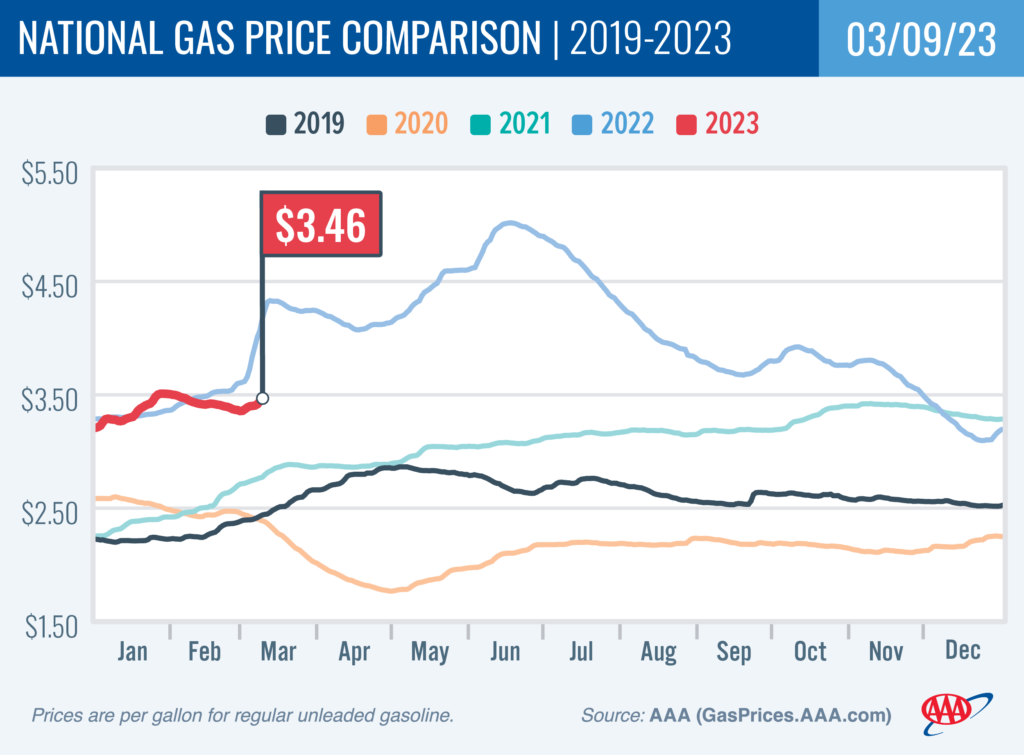
WASHINGTON, D.C. (March 9, 2023)—The national average for a gallon of regular gasoline increased nearly a dime since last week to $3.46. However, this price pop could be short-lived, as demand and the global cost of oil have fallen recently.
“Less expensive oil and fewer people fueling usually combine to lower pump prices,” said Andrew Gross, AAA spokesperson, “However, there is some upward pricing pressure at the moment due to the switch to summer blend gasoline, which may add about five to ten cents per gallon. But if demand and oil costs remain low, this recent price bounce may fade.”
According to new data from the Energy Information Administration (EIA), gas demand declined from 9.11 million to 8.56 million b/d last week. Meanwhile, total domestic gasoline stocks decreased by 1.1 million bbl to 238.1 million bbl last week. Although gas demand has declined, fluctuating oil prices have increased pump prices amid tighter supply.
Today’s national average of $3.46 is three cents more than a month ago but 79 cents less than a year ago.

Quick Stats
Since last Thursday, these 10 states have seen the largest changes in their averages: Michigan (+25 cents), Arizona (+22 cents), Kentucky (+17 cents), New Mexico (+17 cents), Ohio (+15 cents), South Carolina (+15 cents), Wisconsin (+14 cents), Delaware (+13 cents), Texas (+13 cents) and Indiana (+13 cents).
The nation’s top 10 least expensive markets: Mississippi ($3.00), Missouri ($3.05), Texas ($3.06), Oklahoma ($3.08), Arkansas ($3.08), Kansas ($3.09), Louisiana ($3.10), Alabama ($3.10), Tennessee ($3.14) and Kentucky ($3.14).
Oil Market Dynamics
At the close of Wednesday’s formal trading session, WTI decreased by 92 cents to settle at $76.66. Crude prices decreased yesterday due to weaker domestic oil demand expectations for 2023 after the Chair of the U.S. Federal Reserve indicated that additional interest rate increases are likely. The market is concerned that rising interest rates could tip the U.S. economy into a recession, which would lower oil demand amid reduced economic activity. Additionally, the EIA reported that total domestic commercial crude inventories decreased by 1.7 million bbl to 478.5 million bbl last week.
Drivers can find current gas prices along their route using the AAA TripTik Travel planner.
###
